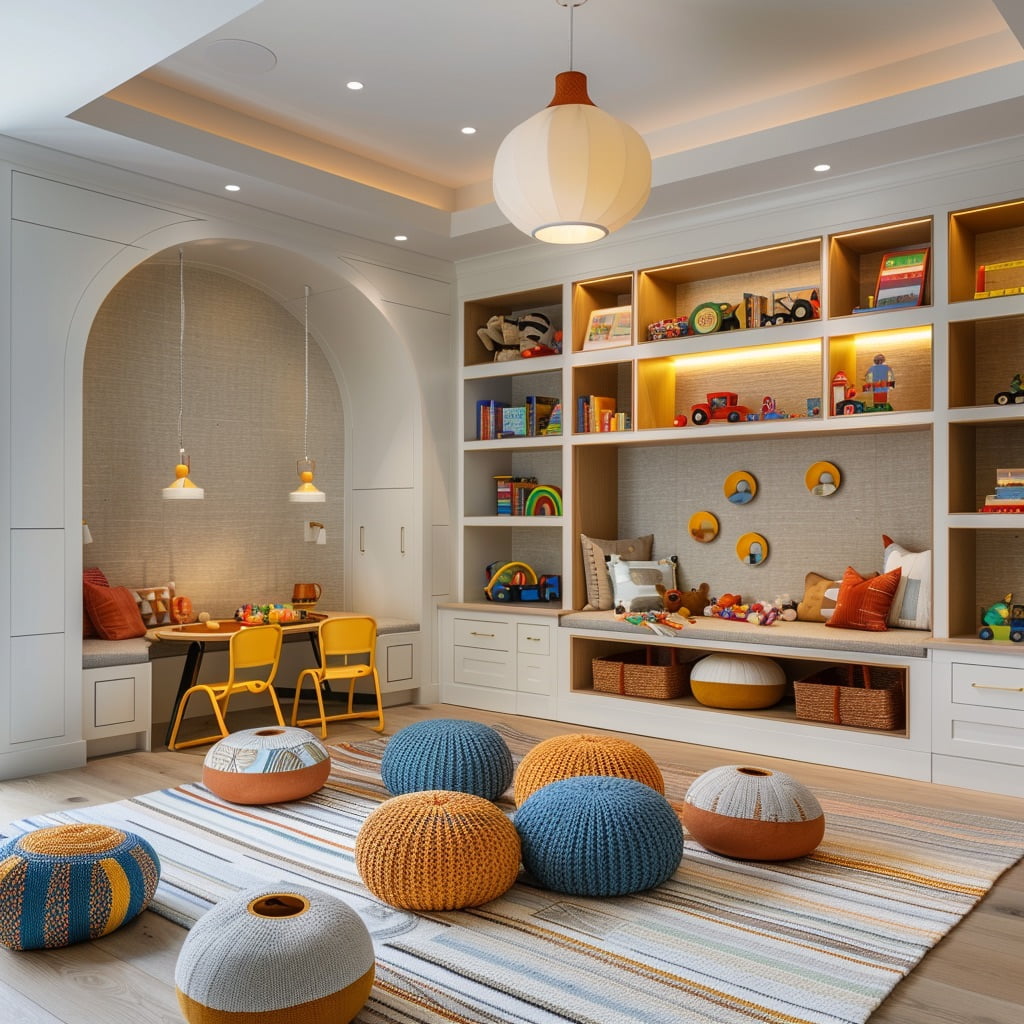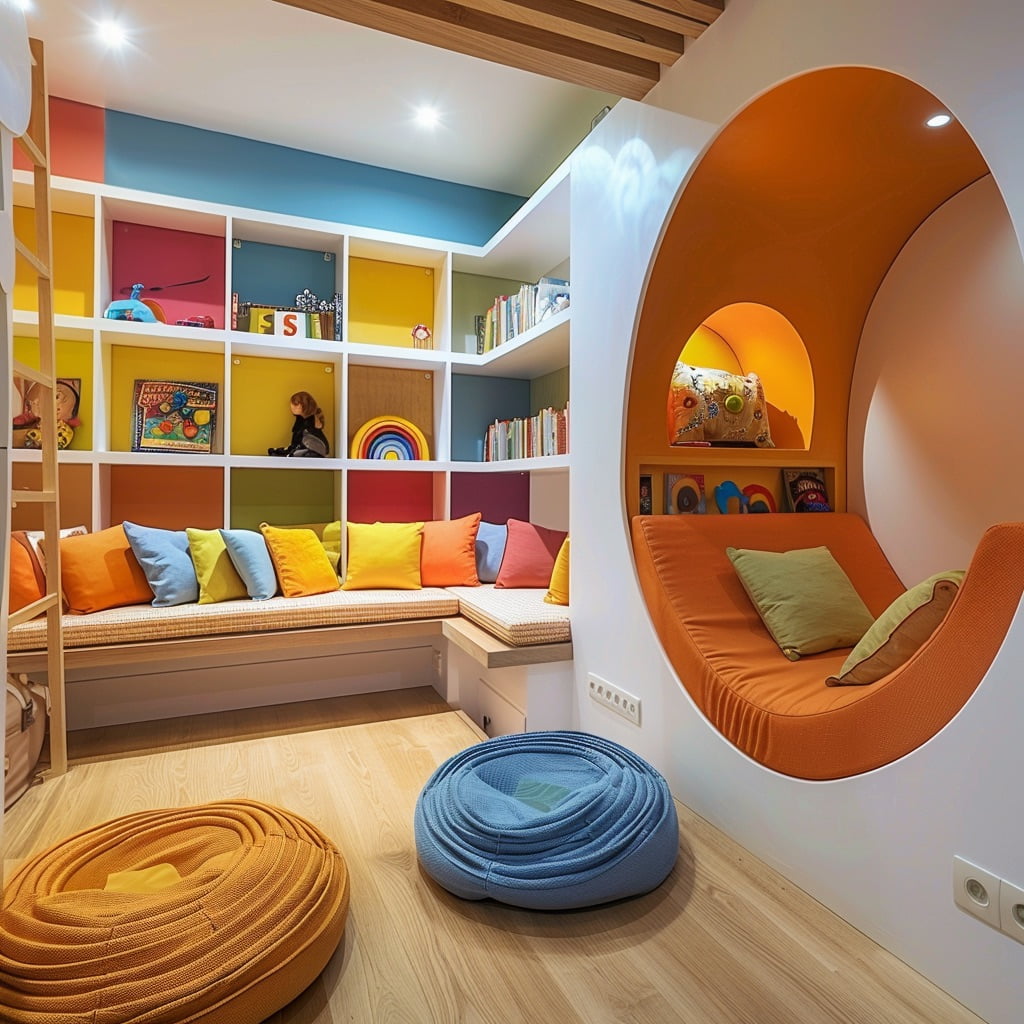Creating a dedicated playroom for your kids can be a fantastic way to provide them with a space for creativity, play, and relaxation.
In a city like Pittsburgh, known for its vibrant communities and family-friendly environment, having a well-designed playroom can enhance both the home environment and your child’s development.
This article explores practical tips for setting up a fun and functional playroom that caters to your child’s needs while also being safe and easy to maintain.
1. Choose the Right Space

The first step in creating a playroom is choosing the right space in your home. It’s essential to select a room or area that is easily accessible and safe for children. Consider a space that receives plenty of natural light, as this can create a welcoming and energizing environment. If possible, choose a room that can be repurposed as your child grows, ensuring it remains functional for years to come.
When selecting the space, think about the proximity to other areas of the house. A playroom near the main living area or kitchen allows parents to supervise easily while attending to other tasks. Also, consider the size of the room. It should be spacious enough to accommodate different play activities without feeling cramped.
2. Ensure Proper Lighting and Ventilation
Good lighting and ventilation are crucial for any playroom. Adequate lighting not only ensures the room is bright and cheerful but also helps in reducing eye strain during activities like reading or crafting. Consider incorporating a mix of natural and artificial lighting. Large windows can bring in plenty of natural light, making the space feel open and airy. Working with Pittsburgh window replacement experts, such as Legacy Windows and Doors, can help you install the best windows for maximizing light and energy efficiency.
Ventilation is equally important, especially in a room where children spend a lot of time. Proper air circulation helps maintain a healthy environment and prevents the buildup of moisture and odors. Ensure that windows can be easily opened for fresh air, or consider installing a ceiling fan or air purifier to enhance air quality.
3. Design with Safety in Mind

Safety should be a top priority when designing a playroom. Childproofing the space can prevent accidents and give parents peace of mind. Start by covering electrical outlets and ensuring that cords are out of reach. Secure heavy items, such as bookshelves and dressers, to the wall to prevent tipping.
Use paints and finishes that are not toxic on walls and furniture to protect children from harmful chemicals. Soft flooring, like foam mats or carpets, can cushion falls and provide a comfortable area for play. It’s also a good idea to choose rounded furniture to avoid sharp edges. Additionally, ensure that any toys or materials are age-appropriate and safe for children to use.
4. Create Zones for Different Activities
Organizing the playroom into different zones can help manage activities and keep the space functional. Consider setting up distinct areas for reading, crafting, playing, and relaxing. For example, a reading nook with a cozy chair and bookshelf can encourage a love of reading, while an art area with a table and art supplies fosters creativity.
Having separate zones can also help keep the playroom organized. When each activity has a designated space, it’s easier for children to find what they need and put things back when they’re done. Use rugs or furniture to define these areas clearly, making it easy for kids to understand the layout.
5. Incorporate Storage Solutions
Storage is key to maintaining an organized and clutter-free playroom. Ample storage ensures that toys, books, and art supplies have designated places, making it easier to keep the room tidy. Consider using a combination of open and closed storage solutions. Open shelves can display toys and books attractively, while closed cabinets or bins can hide away less frequently used items.
Choose child-friendly storage options, such as low shelves or bins that kids can easily access. Labeling bins and boxes can help children learn to organize and find their toys independently. Additionally, rotating toys and books can keep the playroom feeling fresh and prevent it from becoming overcrowded.
6. Choose Durable and Easy-to-Clean Materials
Selecting durable and easy-to-clean materials is essential for a playroom, as this space will likely endure a lot of wear and tear. Start with the flooring; opt for materials that are both sturdy and simple to maintain, such as vinyl, laminate, or tile. These options are not only resilient but also easy to wipe clean after spills or messy activities. Moreover, consider using area rugs that can be easily removed and washed.
For the walls, choose washable paint or wall coverings that can withstand frequent cleaning. This is particularly useful in a playroom where creative activities might lead to unexpected splashes and stains. When it comes to furniture, go for pieces that are designed to endure rough play and are easy to clean. For example, couches and chairs with removable, washable covers are practical choices. By choosing durable materials, you ensure that the playroom remains in good condition and requires less frequent maintenance, saving you time and effort in the long run.
7. Add Fun and Stimulating Decor
Decorating the playroom with fun and stimulating elements can make the space more engaging and enjoyable for children. Start by incorporating bright, cheerful colors that appeal to kids. These can be applied to the walls, furniture, and accessories, creating an inviting atmosphere. You can also add playful patterns and designs, such as stripes, polka dots, or themed murals, to spark creativity and imagination.
Include interactive elements like a chalkboard wall or a magnetic board where kids can draw or display their artwork. Wall decals featuring favorite characters or nature scenes can also add a touch of whimsy and personalization. Consider adding soft elements like cushions, bean bags, and colorful rugs to create cozy spots for relaxation and play. Don’t forget to involve your child in the decorating process, allowing them to choose colors and themes they love. This not only makes the room more personal but also helps them feel more connected to the space.
Key Takeaways
Creating a fun and functional playroom is not just about aesthetics or practicality; it’s about crafting a space where children can learn, grow, and express themselves. It’s an opportunity to blend creativity with structure, ensuring the room evolves with your child’s changing needs and interests.
A well-designed playroom can become a cherished space for your family, fostering creativity, joy, and a love of play that lasts a lifetime.